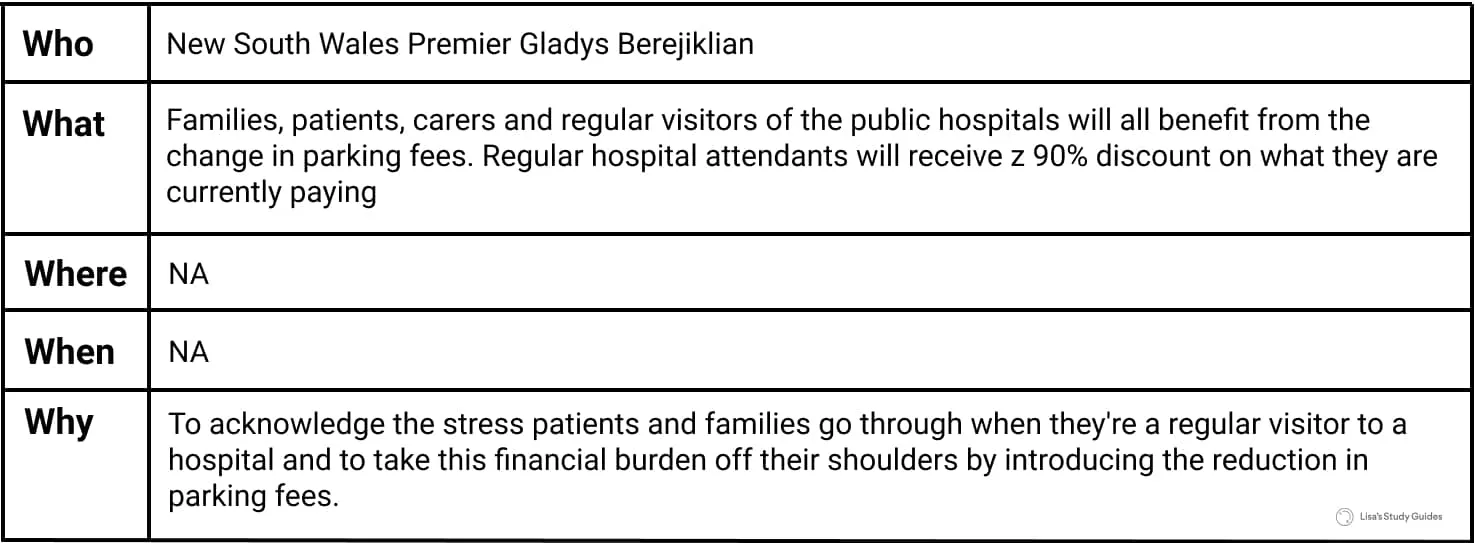The scariest part of the EAL exam, while might not be the most daunting task, is probably getting your head wrapped around an unfamiliar language analysis task under time condition. Jargons and difficult terms might be used, and some articles tend to not be so straightforward making this task more challenging for EAL students. This blog post aims to alleviate this fear for all EAL students as much as possible and better your performance in the end-of-year exams. After reading this, I'd highly recommend our Ultimate Guide To Language Analysis as you study for your next SAC or exam.
Reading Comprehension
To understand and analyse an article well, you will need to know the writer’s contention well, identifying whether they are for or against an idea. Most language analysis articles are written on an issue, which is why it is important to spot what the issue is and the writer’s stance. Most of the time, the writer’s contention is found at the beginning of the article, in the title, though there are times it is found at the end of the article. Sometimes, skimming through an article might be sufficient for you to find its main point.
Spotting and understanding arguments, on the other hand, might be much more difficult as they can be found anywhere within the articles and the number of arguments contained varies from articles to articles.
The good news is, there is no right or wrong answer in English so there is no need to be too worried about whether what you are writing is ‘precise’ or not. In order to look for arguments and ‘chunk the reading passage’ in the most efficient way, you should be paying attention to the ways the writer tries to structure the article (e.g. paragraphs, headings and subheadings if there are any, etc). More than often arguments can be found at the beginning of paragraphs (writers might also use that good old Topic-Evidence-Example-Linking structure in drafting their piece) and sometimes two consecutive paragraphs focus on one singular argument.
Also, arguments should be specific and support the writer’s contention. For instance, if the contention is ‘technology ameliorates Americans’ standards of living’, the arguments might be something along the lines of ‘it is beneficial as it improves efficiency in workplace environment’ or ‘it allows people to communicate easily’. Trying to make an educated guess on what the arguments might look like will definitely help if you already know the contention of the article.
Language barriers might be an issue if the writer uses technical terms related to an unfamiliar area (e.g. an article about “pneumonoultramicroscopicsilicovolcanokoniosis”, a lung disease caused by a certain type of dust, might pop up – highly unlikely but thank me later if it does come up). This is why dictionaries are there to help us and they are a must-have coming into EAL exams and SACs. You are allowed to bring bilingual dictionaries as well, so make sure you have a good set of dictionaries that you can bring into SACs and exams. Regardless of how fluent you are, there is still a possibility that they use one if not more than one unfamiliar term in your language analysis articles.
However, it is not always difficult to guess the meaning of the word without using the dictionary (time restraints!!) by looking at the sentence as a whole. The location of the words within a sentence might allow you to make a reasonable guess of what type of words it is or what it might mean. If it is the subject or object of the sentence, it is either a pronoun, a noun or a name. If the word is after a subject, it is likely to be a verb which describes an action! To familiarise yourself with sentence structure further, read my guide on The Keys To English Fluency and Proficiency.
Answering Reading Comprehension Questions
Section C, Question 1 requires students to write short answers, in note form or sentences, which altogether will make up of 50% of the marks in Section C. I am not sure about you but for a lot of students, getting good marks for Question 1 is much easier than getting good marks for Question 2, which requires you to write a full language analysis essay. This is why it is important that you are able to maximise your marks in this question because they are purported to be easier marks to get! Some of the questions will ask the students for factual information but more difficult questions will require to think about that is contained in the text and make an interpretation based on your understanding.
1. Question words
To know what sort of answer you are expected to give before looking for details from the article, you need to be familiar with question words.
WHO - A particular person or group of people impacted by an incident or involved in a situation
WHAT - This really depends. It might require you to give out information about something or to identify reasons for the writer’s opinions (which is good it might make it easier for you to find the writer’s arguments)
WHEN - The timeframe within which an issue or event occurred (date, day, etc)
WHERE - The location of an event
WHY - The reasons for something
HOW - How a problem can be resolved
2. Direction words
Unfortunately, not all questions in this section have “question words” and examiners usually give out questions that are broader using “direction words” or “task words”, making this section more challenging for students. EAL is not the only subject that requires students to know their direction words well so it is definitely worthwhile learning these words to improve your performance. These are the most common direction words used in Section C (see below!).
Describe
Giving information about something or to identify the writer’s opinions
Explain
This requires you to give out information in your own words and elaborate
Identify
Students will be required to find what is asked from the article and write them down in the briefest form possible
List
Usually in note forms – to answer this you need to identify what is asked and briefly noting them down
Summarise
Retelling something in a succinct and concise ways in your own words, it should only be enough to highlight key ideas
Support
Finding evidence from the text to justify a statement or opinions
3. Marks allocation
Another super helpful tip is to pay extra attention to the marks allocation of the questions. It usually gives you a fairly accurate indication of how much you should write. The general rule of thumb would be that the number of marks tell students how many sentences or points they should be making.
Example:
Identify the reasons why the writer loves travelling (2 marks)
Students should be writing down 2 reasons why the writer loves travelling
The editor strongly opposes the use of plastic bag. Support this statement (3 marks)
In this case, it is probably best to find 3 pieces of evidence from the article that justify the statement stated to make sure you do not lose any marks by not writing enough.
4. Sample Questions And Response
My own response and annotation of Question 1 and Section C of the 2017 EAL exam is below. I really hope it would give you guys a better idea of what is expected from EAL students.

Time Management Tips
Look at the comprehension questions during reading time
I usually used my reading time skimming through the article, looking at the questions and flip back and forth the booklet to look for answers for the questions at the back. The reason why this was the first thing I did was because they often contain clues of what the arguments might me. Questions such as “give three reasons why the editor thought technology is beneficial” will help you immediately identify some key ideas and arguments in the article.
Look for key features instead of analysing and finding techniques straight away
I also used the reading time to find the contention, determine what type of article it was and the source, etc. The following acronym might help you! I often tried identifying all of the features below as it also helped me plan my introduction within reading time.
Issue
Author
Contention
Title
Form
Audience
Source
Tone
For a detailed guide on How to Write an A+ Language Analysis Introduction, check out our advice here.
Set out a detailed time management plan for your essay the night before the SAC or exams (or earlier if possible)
Be strict with yourself, know your writing speed and know how long it takes you to write a paragraph.
Stick with one introduction’s structure/ format
If you are used to writing an introduction that, for instance, starts off by introducing the issue, title of the piece, author, and then the contention, tone, audience then stick with it, or memorise it if you do not have the best writing speed or just do not work well under time pressure.
Example:
Whether or not (issue) is an issue that garners much attention in recent media. In response to this, (author) writes a (form) titled “(title)” to express his disapprobation/endorsement of (issue) to (audience). By adopting a (tone word 1) and (tone word 2), (author) asserts/ articulates/ contends that (contention). With the use of an accompanying visual, the writer enhances the notion that (contention).
Not be way too thorough with annotation
When it comes to performing well under time condition, perfectionism might hinder you from best maximising your marks! Everyone learns differently and has different approaches to this task but it is probably better if we do not spend way too much time annotating the article. While it is important to scan through the article and identify important persuasive techniques, sometimes it is more than sufficient to just circle or highlight the technique instead of colour-coding it, writing down what its effects on the audience, labelling techniques. Don’t get me wrong, these aforementioned steps are important, but there is no point writing that information down twice because you will be repeating those steps as you write your essay anyway! I’d recommend trying out different annotation techniques and see what works for you, but for me minimalism served me well.
Create your own glossary of words
Sometimes, it takes too much time just sitting down staring at the paper deciding what words you should be using. We’ve all been there, worrying if you have repeated “highlight” or “position” way too many time. Memorising a mini glossary might solve this issue and save us writing time. I have included a sample glossary for you to fill in, hopefully it helps you as much as it did me! It might be a good starting point for you.
Convincing the audience to…persuade, position, propel, compel, galvanise, etc
Highlight the idea that…underscore, enhance, fortify, bolster, etc
Evoke (an emotional response)...elicit, garners, etc
The writer uses …employs, utilises, etc
The writer criticises …critiques, lambastes, chastises, condemns, denounces, etc
Practice!
At the end of the day, regardless of how many tips you have learned from this blog, it would not be enough to significantly improve your marks unless you practice frequently. Knowing how long it takes you to write the introduction, or each paragraph will better enable you to finish the essay within the time set and allow you to spend a bit of spare time proofreading your essay. If you are aiming for A+’s, writing every week is probably the best piece of advice I can give because without enough practice, your performance under pressure cannot match up to your usual performance.

























.jpg)